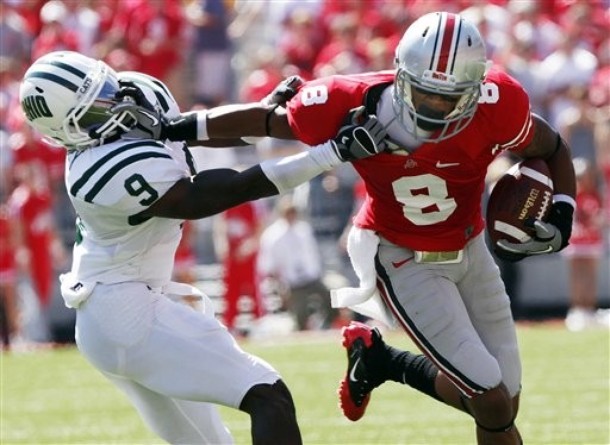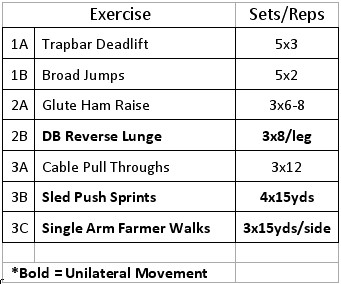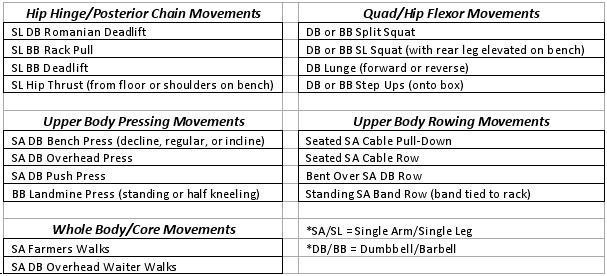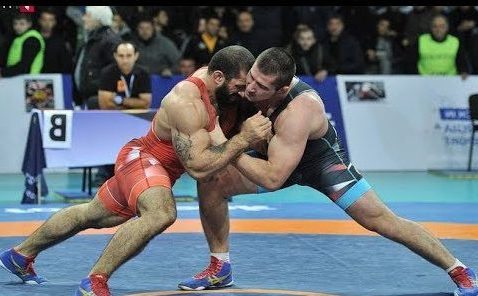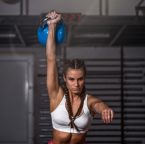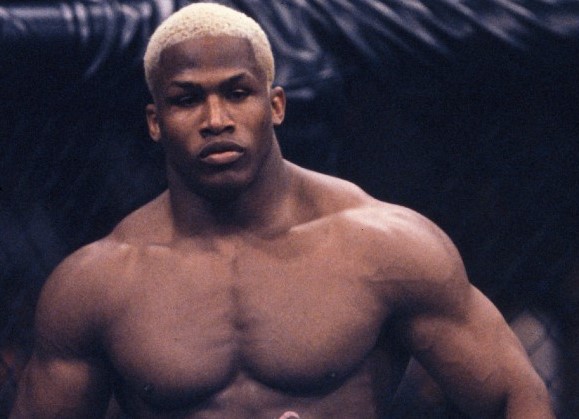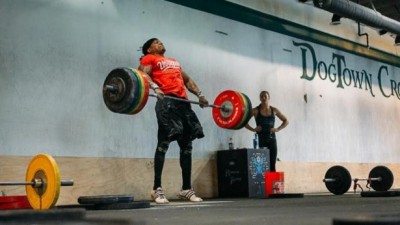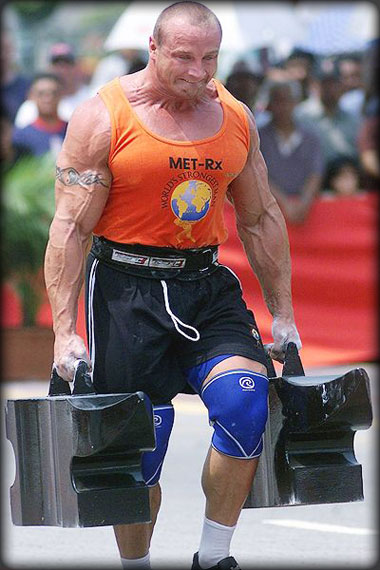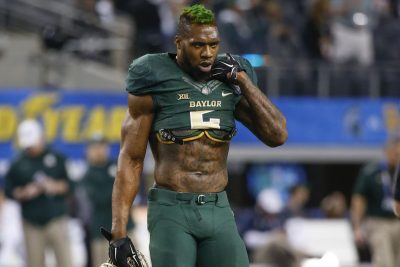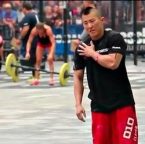In today’s article I want to discuss the importance of unilateral training for athletes. While I feel that most populations should be incorporating some form of unilateral training into their workouts, I especially feel it is essential for athletes to include it for a variety of reasons.
First off, What is Unilateral Training?
Unilateral training is a style of training in which you are only working one limb at a time. In most traditional training movements we use both limbs concurrently to complete the task at hand.
Easy examples to think about are the traditional barbell bench press (using both arms to press the weight) and the barbell back squat (using both legs to squat the weight).
While these bilateral training movements are still very essential in making up a complete strength and conditioning program, athletes should be incorporating unilateral exercises as well.
Why Do Athletes (as well as everyone else) Need To Incorporate Unilateral Training?
One of the main reasons why athletes need to train unilaterally is because many times that is the way that they use their body in their particular sport (IE you want your training to have the best possible carry-over to your sport).
Think about it, when you run are you running on one leg at a time or both? What I mean by this is that you never use both legs at the same time while sprinting. Rather, one leg is being worked at a time (see example below)
The right leg (the working leg) is propelling the body forward while the left leg (the non-working leg) swings around. After the right leg is finished working or propelling the body forward, the left leg then becomes the working leg to continue to propel the athlete’s body forward while the right leg then swings around. This process of repeatedly working one leg at a time makes up our running gait.
An example for the upper body using one limb/side at a time would be a running back performing a stiff-arm or a boxer throwing a jab. Both of these actions are using one arm at a time.
Related: Best Muscle Building Supplements
While functional carry over is one main reason to incorporate unilateral exercises in your training program, another reason is to prevent injuries. After all, the best athlete in the world is useless to their team if they cannot be out there competing and helping their team win.
Training one limb at a time forces the stabilizing joint muscles to work overtime. Try it for yourself and you’ll see. Squat with both legs and then try squatting with one leg (with the rear leg elevated on a bench) and you’ll see that it is much tougher to balance the body on one leg.
By forcing the joint stabilizing muscles to fire more to control the movement, you are in return making them stronger to help prevent any potential future injuries.
An often overlooked benefit to unilateral training is increased use of the core muscles. This is especially true for upper body unilateral training where you are pressing or rowing with one arm at a time.
Try it for yourself next time you’re in the gym. Lie on a bench and bench press dumbbells with both arms, then try the same weight using one arm at a time and you tell me which one worked your core more. I look to improve core strength any chance I can get with my athletes as I feel a strong, stable core is one of the most underrated qualities an athlete can have.
So how do you incorporate unilateral training into your workouts?
Most of the time I like to use unilateral exercises as accessory lifts, meaning I would program them in the middle or towards the end of an athlete’s given workout. While I feel they are a must-have in a training program, I generally reserve the main lifts (or lifts performed at the beginning of the workout) for bilateral movements.
While a unilateral exercise is great for all the qualities mentioned above, when it comes to producing strength and power I generally rely on compound bilateral exercises (think squats, deadlifts, bench press, overhead press, cleans, etc). These compound bilateral lifts should make up the main movements in a training program with the unilateral movements sprinkled in to form some of the accessory lifts.
These compound bilateral movements also need to be performed at the beginning of a training period when the athlete is freshest. This will ensure the athlete gets the most out of his/her training session, as well as greatly reduce the risk for injury (the last thing I want to see is an athlete squatting heavy at the end of their workout while in a fatigued state).
Below is an example of how I would incorporate unilateral exercises into a lower body training session:
As stated above the unilateral movements will make up some of the accessory lifts that come after the main lift (in this case it is the trap bar deadlift). DB reverse lunge is a pretty easy one to understand as your simply reverse lunging with one leg and work the front/lead leg.
Sled work is often times not thought of as unilateral training, but any time you’re pushing a sled, you’re using one leg at a time (think back to our sprinting example we talked about earlier). The single-arm farmer walk is a true total-body unilateral exercise as it pretty much works the entire one side of the body (particularly the core, upper traps, and grip).
Below is a list of unilateral exercises that I would recommend you start incorporating into your training today.
If you’re not familiar with some of these movements, just Google them and you should be able to find some videos demonstrating them.
Let’s Recap
- Unilateral training is training with the focus on one limb (arm or leg) working at a time. Easy enough, right?
You need to train unilateral exercises because……….
- They generally have a good a very good carryover to the movements that are used in sports. You’d be surprised how often you spend your time on one leg at a time or are using one arm at a time during competition.
- They strengthen important stabilizing joint muscles to help prevent injuries to keep you healthy and on the field/court/mat (wherever the hell you compete and ensure that you can continue to dominate your competition all day long).
- Certain unilateral movements help to strengthen the core and increase its stability (very underrated when it comes to developing athletes). They also help to correct muscle imbalances.

Bobby Fioritto is the founder and president of Elite Sports Performance, one of Cleveland, Ohio’s most respected athletic training facilities. He holds a Master’s degree in Exercise Physiology from Kent State University and is a Certified Sports Nutritionist (CISSN) and Youth Nutrition Specialist.
Bobby has trained athletes at every level, from youth competitors to elite professionals, delivering measurable improvements in strength, speed, and performance. His science-based approach combines strength and conditioning, nutrition, and recovery strategies to help athletes excel both on and off the field.
Learn more at www.BobbyFioritto.com.


